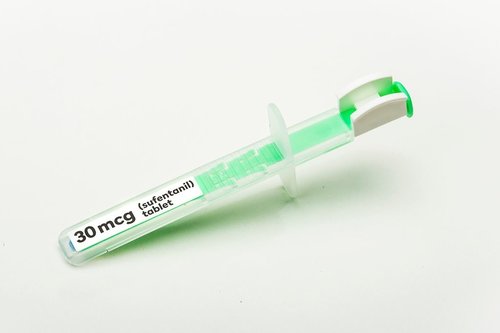Opioid Hysteria and the Demonizing of Dsuvia
/By John Burke, Guest Columnist
Recently the FDA approved a new sublingual formulation of sufentanil -- called Dsuvia -- for the management of moderate to severe acute pain in hospital-like settings. This would include surgical centers and emergency departments.
When the FDA announced this approval, several so-called experts claimed that Dsuvia – which is a potent opioid – would worsen the already out of control opioid problem. They said it would quickly find its way to the streets of America and kill even more of our citizens addicted to opioids. They can’t imagine why the FDA would approve such a killer drug!
Dsuvia was originally developed by AcelRx Pharmaceuticals, in cooperation with the U.S. Department of Defense, to treat battlefield wounds. The single dose formulation is designed to enter your body and provide pain relief faster than the traditional intramuscular injections that are now standard in treating traumatic injuries.
I can only imagine the horrendous wounds that are present on the battlefield. Offering faster pain relief seems like a great option, to say the least!
ACELRX PHARMACEUTICALS
Dsuvia will also be used in our nation’s emergency departments and other healthcare facilities to offer faster pain relief to patients who suffer traumatic injuries. The drug will not be available in retail pharmacies or for most prescribers to order up for a patient. Doctor shoppers, script scammers and others that prey on retail pharmacies will have no access to this pain reliever. Those involved in armed robberies or burglaries of retail pharmacies will also have zero access.
Who will have access to Dsuvia are healthcare employees -- nurses, doctors and other medical professionals who already have access to a whole host of opioid drugs. There is no question that Dsuvia could potentially be a target of a small group of professionals who suffer from addiction problems. However, the illegal diversion and sale of this specific medication seems less likely in healthcare facilities.
Dsuvia will be more easily identified when it is diverted due to its limited availability and usage. Addicted healthcare employees will likely opt for more commonly used opioids like morphine and hydromorphone rather than a rarely used medication that will be easily missed when diverted.
The other part of this equation, that was either not considered by critics or didn’t suit their narrative, is that diversion inside healthcare facilities virtually always involves self-addiction. This means that even if an opioid is stolen by an employee inside one of these facilities, it will rarely make it to the street and cause more deaths.
AcelRx has already developed a Risk Evaluation and Mitigation Strategy (REMS) involving RADARS, a nationwide drug abuse surveillance system, to monitor any diversion of Dsuvia and provide quarterly reports to law enforcement. In the interest of full disclosure, I am on the Scientific Advisory Board of RADARS.
Dsuvia has great potential to provide quick relief to trauma patients in a focused setting. Its diversion potential, especially to the public, is almost nil. Demonizing a drug without any real knowledge of its legal distribution and potential for diversion is irresponsible to say the least.
The drug problem in America primarily involves street drugs such as heroin, illicit fentanyl, and more recently crystal methamphetamine and cocaine. Even as the prescribing of opioids has dropped over 30% in recent years, drug deaths continued to rise. The reason is the increased supply of street drugs supplied by cartels that continue to profit from our nation’s addiction.
Put the blame where it belongs, and don’t ostracize a legitimate new pain drug that any of us might need in an emergency.
John Burke spent nearly 50 years in drug and law enforcement in southwestern Ohio. John is a former president of the National Association of Drug Diversion Investigators and is the president and founder of the International Health Facility Diversion Association, a non-profit devoted to the issues surrounding the diversion of controlled substances from healthcare facilities.
The information in this column should not be considered as professional medical advice, diagnosis or treatment. It is for informational purposes only and represent the author’s opinions alone. It does not inherently express or reflect the views, opinions and/or positions of Pain News Network.





